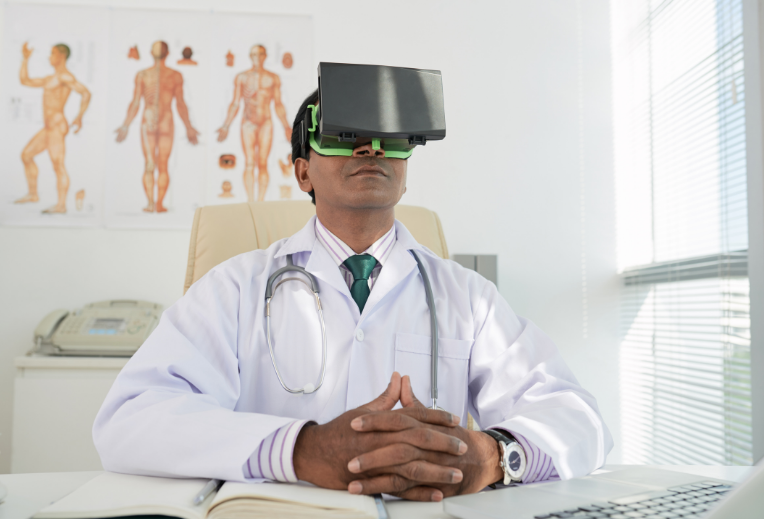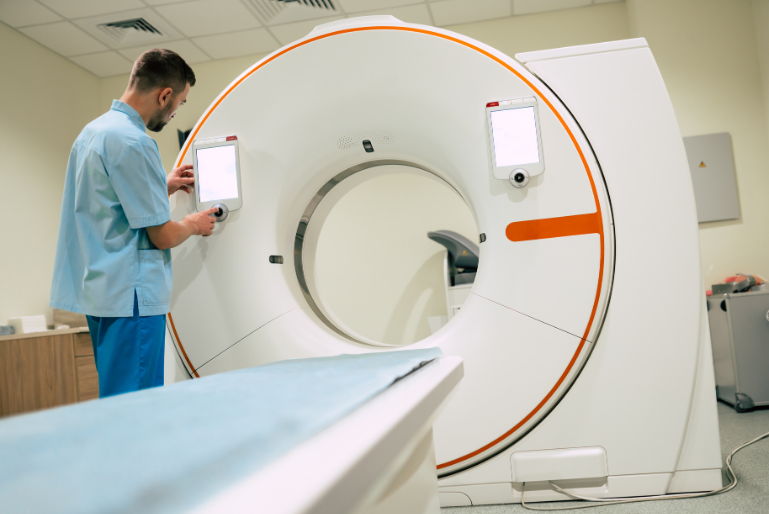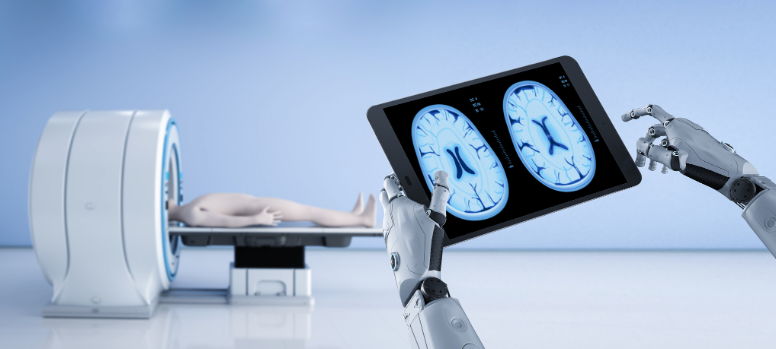
Expectations of Medical Imaging in the Next 20 Years
In the next 20 years, radiology will see many more advancements and innovations that change how radiologists interact with imaging technology [1]. This is naturally due to the demand for better, more accurate imaging that improves decision-making [1]. In the next 20 years, we can expect AI to change the way that medical imaging is used for diagnostics and disease prevention [1]. The influx of new technologies and rapid innovation will lead to the use of genomics and molecular imaging [1]. These technologies push for personalized and early disease prevention [1]. Overall, more advancements will be seen in the next 20 years that help push healthcare toward disease prevention.

Trends in Medical Imaging
Wearables
An area that is often unexplored in the medical imaging realm includes wearables that provide radiology capabilities. For instance, one device provides a portable way to measure brain activity while patients go about normal activities [2]. This MEG brain scanner allows doctors to detect potential disorders that may otherwise be missed in patients [2]. Another wearable that incorporates radiology is an MRI glove [2]. This glove provides consistent imaging of a patient’s joints [2]. This can be used to aid in prosthetics so that patients have more personalized treatment options [2]. Overall, wearables are already being innovated to include various sensors and monitoring technologies. Therefore, the future should expect to see wearables also include radiology and diagnostic technologies that can consistently monitor a patient’s disease in real-time, or even before it is noticeable by doctors.
3D Imaging & VR
The healthcare industry is including innovations in virtual reality, whether to provide training or to provide patients with new ways of treatment for mental health. Therefore, it’s no surprise that virtual reality would collaborate with 3D medical imaging. For instance, new technology allows doctors to create 3D images of MRIs, that they can then examine using 3D glasses or even through a VR headset [2]. This allows doctors to rotate images and adjust them however they need to see the best treatment options. This is especially useful for surgeries because doctors can see tumors before they even operate. This changes the way that treatment is provided because doctors will be able to stimulate potential treatments. This can help avoid high-risk operations and allows doctors to practice maneuvering obstacles [2].

Advancements in Medical Imaging from AI Integration
New advances in AI and medical imaging allow chest X-rays to detect a patient’s age, and use disparities to detect signs of chronic conditions [3]. This is a major breakthrough in medical imaging because it shifts the focus from treating disease to preventing and mitigating diseases. The AI model would come up with an estimated age which would then be compared with the patient’s chronological age to determine a correlation with various chronic conditions [3]. This allows doctors to see if a patient is facing health conditions even when it is too early to see signs of the disease and helps catch conditions before they progress. This advancement in medical imaging will allow patients to have faster diagnoses. In the future, AI should be able to specify the conditions that patients have by also accessing past medical records, prior visit notes, and collaborations with the patient’s care team.

Another key focus in AI integration with medical imaging is promoting the standardization of data that is consistent and reliable so that workflows are improved [4]. This means that more hospitals will have access to patients’ medical images, which will promote collaboration between different specialties [4]. Furthermore, standardizing data makes it easier for data to be transferred and applied to newer technologies since new partnerships will make the data more adaptable [4]. Finally, AI will be able to streamline the process and alert providers to cases that should be prioritized first. AI will also be able to alert of any undiagnosed conditions, or of worsening symptoms. Therefore, AI is crucial to advancing medical imaging technology.
HITS
HITS provides management services and collaborates with clinicians in the development of health informatics. We provide tools that promote safe, timely, patient-centered, and equitable care. Our agency culture and mission facilitate customer and human-centered design. Additionally, we tailor software and project management support products to meet our customer’s needs. HITS also focuses on transforming health care by analyzing integrated medical solutions and evaluating information systems. Our goal is to enhance individual and population health outcomes, improve patient care, and strengthen the clinician-patient relationship.
References
- https://www.intelerad.com/en/2022/05/13/what-is-the-future-of-radiology/
- https://www.definitivehc.com/blog/future-trends-in-medical-imaging-2019
- https://scitechdaily.com/the-future-of-medical-imaging-advanced-ai-can-tell-your-true-age-by-looking-at-your-chest/
- https://finance.yahoo.com/news/enlitic-blackford-join-forces-revolutionize-160000164.html?guccounter=1&guce_referrer=aHR0cHM6Ly93d3cuZ29vZ2xlLmNvbS8&guce_referrer_sig=AQAAAL5O_Sjv0YGD6xQbzKgsCXjSmpGIfY_gKev2ZYAkK7-WbV-pSaikMRlhsjFONvE2xhYe3CBn4Qa3i3CkBKbfqoWMdey18yEKbxJ81SiEREkaj1Y_0Sgjm7PQTIELywFZVtkeVRn-6dkeKozkpU9EKZnsVPioAZUehcKb6YLmRKO6